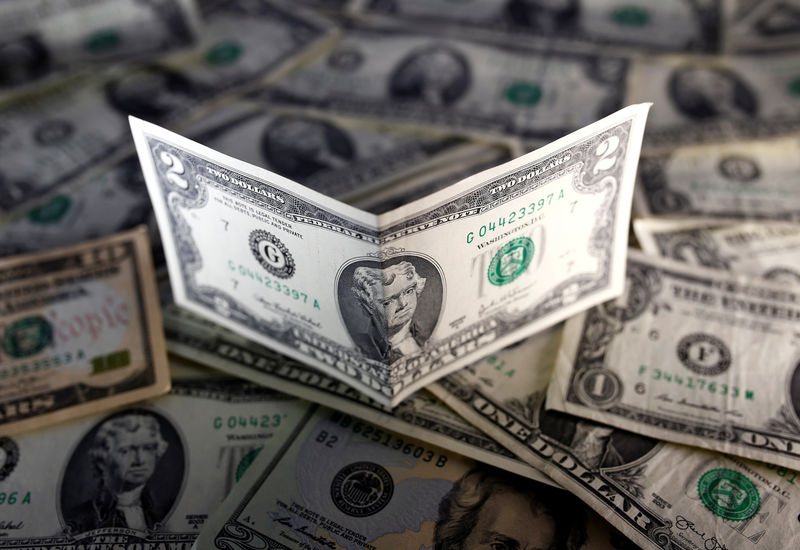By Gina Lee
Investing.com – The dollar was down on Wednesday morning in Asia, with U.S. bonds impacting currencies. The dollar and yen also came under pressure from a global shares rally that decreased demand for safe-haven assets.
The U.S. Dollar Index that tracks the greenback against a basket of other currencies inched down 0.03% to 93.703 by 12:28 AM ET (4:29 AM GMT).
The USD/JPY pair inched up 0.13% to 114.50.
The AUD/USD pair was up 0.36% to 0.7499 and the NZD/USD pair edged up 0.12% to 0.7161.
The USD/CNY pair fell 0.72% to 6.3826, with China keeping its loan prime rate steady at 3.85%. The GBP/USD pair edged up 0.12% to 1.3811.
"The move in equities has seen the dollar and yen shunned," Pepperstone head of research Chris Weston said in a note.
"It's really just pick a yen cross and see the 'rip your face off' move. This is a momentum play here and timing the pullback in yen crosses is key, but it doesn't feel like we're going to see a rush to cover yen shorts anytime soon in this dynamic."
Benchmark U.S. 10-year Treasury yields hit a fresh five-month high at 1.6630%, with higher long-term U.S. yields attracting Japanese investors. However, two-year yields hovered around 0.4050% after a sharp retreat from Monday's 19-month high of 0.4480%, an indication of decreasing bets for early interest rate hikes from the Federal Reserve.
"Risk sentiment remains in the ascendancy," while "a fall-back in front-end U.S. yields, so symptomatic of a slight paring back in expectations for when Fed rates 'lift-off' might occur," dealt the dollar a double-whammy, National Australia Bank (OTC:NABZY) head of FX strategy Ray Attrill said in a note.
At the same time, markets are coming to "the highly belated realization that whether the Fed raises its interest rate in 2022 or not until later, other central banks are getting in ahead of them... with the Bank of England likely next cab off the rank as early as next month," the note added.
Meanwhile, Richmond Fed President Thomas Barkin said on Tuesday that U.S. labor shortages could outlast COVID-19 and limit overall economic growth unless the U.S. improves education, health, and childcare policies to boost the number of people willing and able to work.
